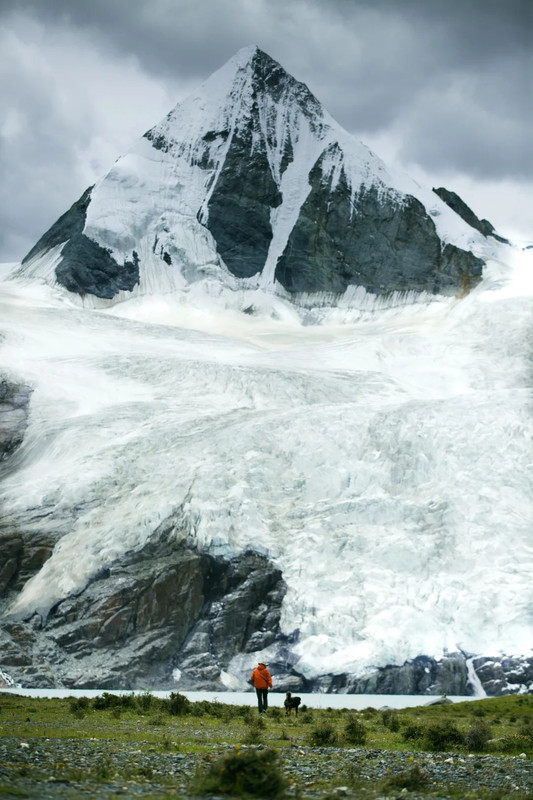What is the difference between crystal and quartz?
What is the difference between crystal and quartz?
Blog Article

When you wander into a rock shop or browse through jewelry online, you’ll often see the words “crystals” and “quartz” used side by side. Sometimes they’re even used interchangeably. If you’re new to the world of minerals, gems, or healing stones—or if you’re just curious because you’ve seen both words in Spanish as “cuarzo”—you might wonder: what’s the real difference between crystals and quartz? Are they the same thing, or are there important differences? Let’s break it down in a clear and friendly way.
Crystals and Quartz: Clearing Up the Basics
First, let’s get the big picture. All quartz is a crystal, but not all crystals are quartz. That might sound confusing, but it’s simple once you get the hang of it.
- Crystal is a broad term. It refers to any solid material whose atoms are arranged in a repeating, orderly pattern. Think of it like a beautiful, microscopic grid.
- Quartz is a specific mineral. It’s made up of silicon and oxygen (SiO₂), and it forms crystals with a distinct six-sided shape. Quartz is one of the most common minerals on Earth.
So, while “crystal” is the big category, “quartz” is just one member of the crystal family.
Everyday Language vs. Scientific Language
Here’s where things get interesting—and sometimes confusing. In everyday language, people often use “crystal” to mean something pretty and clear, like a sparkling diamond or a chandelier. In science, “crystal” refers to the structure, not the prettiness or clarity.
Quartz is always a crystal in the scientific sense, because its atoms are arranged in that repeating pattern. But there are many other crystals, like salt (halite), sugar, diamond, ruby, and even ice! Not all of these are quartz.
Crystals and Quartz Around the World
As our Spanish-speaking friend mentioned, in Spanish, both terms can be called “cuarzo.” Quartz is sometimes known as “cristal de roca” (rock crystal), especially when it’s clear and gem-like. This can be confusing—especially because “cristal” in Spanish can also mean glass, which isn’t a true crystal at all (glass doesn’t have a regular atomic structure).
When you travel or read about crystals in different languages, you’ll find local words and traditions. For example:
- In English, “crystal” might mean clear glass, like in “crystal glasses” for fancy drinking.
- In Spanish, “cristal” could mean both glass and crystal.
- “Cuarzo” is always quartz, but sometimes people use it for any clear, pretty crystal.
These language differences can make shopping for stones a fun (if sometimes confusing) experience!
What Is Quartz, Exactly?
Let’s focus on quartz for a moment. Quartz is a mineral made up of silicon and oxygen. It’s usually clear, but it can come in many colors—like purple (amethyst), pink (rose quartz), or smoky brown (smoky quartz).
Quartz grows in a hexagonal (six-sided) structure. If you’ve ever seen a classic “pointy” crystal, you were probably looking at quartz. It’s hard, durable, and found all over the world, from Brazil to Arkansas to Madagascar.
Quartz is used in watches, radios, and even computers, thanks to its special electrical properties (the piezoelectric effect). But most people know it as a beautiful stone for jewelry, decoration, and spiritual practice.
What Is a Crystal, Then?
A crystal is any solid material where the atoms are arranged in an orderly pattern. Crystals can be made of many different substances—not just quartz! Here are some famous crystals:
- Diamond: Made of pure carbon, known for its sparkle and used in jewelry.
- Salt (Halite): The same stuff you put on your fries, made of sodium and chlorine.
- Ice: Yes, frozen water forms beautiful crystals—think of snowflakes.
- Sugar: Those shiny grains in your kitchen are tiny crystals.
- Ruby and Sapphire: Both are crystals made from the mineral corundum, but colored by different trace elements.
So, when someone says “crystal,” they could be talking about any of these, or about quartz specifically, depending on the context.
Why Do People Mix Them Up?
It’s easy to see why people mix up “crystals” and “quartz,” especially since clear quartz is what most people picture when they think of a classic crystal. In jewelry stores, metaphysical shops, and online, you’ll see phrases like “crystal healing” or “crystal energy,” often with a picture of quartz.
There’s also a bit of mystery and marketing involved. “Crystal” sounds magical and alluring, while “quartz” sounds a bit more scientific. Sellers might use whichever term sounds best for their audience.
The Many Faces of Quartz
Did you know there are many different types of quartz? Here are a few popular ones:
- Amethyst: Purple quartz, loved for its calming energy.
- Rose Quartz: Pink quartz, associated with love.
- Citrine: Yellow to orange quartz, believed to bring abundance.
- Smoky Quartz: Brownish quartz, said to offer protection and grounding.
- Rock Crystal: The clear, colorless form of quartz, often just called “clear quartz.”
All these stones are quartz, and all are crystals—but not all crystals are quartz!
 What About “Crystal” in Other Contexts?
What About “Crystal” in Other Contexts?
Sometimes, “crystal” is used in ways that have nothing to do with minerals at all. For example:
- Crystal Glass: High-quality glass, sometimes containing lead, used in fancy glassware. It’s called “crystal” for its brilliance and ring, but it’s not a real crystal by scientific standards.
- Crystal Balls: Usually made from clear quartz, glass, or other materials, used for scrying or fortune-telling.
- Crystal Chandeliers: Made from cut glass or sometimes quartz, designed to sparkle in the light.
Crystals and Quartz in Healing and Metaphysics
In the world of healing, meditation, and spirituality, both “crystals” and “quartz” are hugely popular. Here’s how people use them:
- Healing: Many believe crystals can help balance energy, clear negativity, or support healing. Clear quartz is called the “Master Healer.”
- Meditation: Holding a crystal or placing it in your space is thought to enhance focus and clarity.
- Chakras: Quartz is often used to balance the chakras, especially the crown chakra.
- Energy Grids: People use different crystals together in patterns to amplify intentions.
Whether or not you believe in the metaphysical properties, there’s no denying the soothing beauty and tactile comfort of holding a smooth, cool stone in your hand.
What About “Cantera”?
Our Spanish-speaking friend’s story about “cantera” is a great reminder that words can have different meanings in different places! “Cantera” can mean a quarry (a place where rocks are dug up), or a specific type of volcanic rock in Mexico used for building. It has nothing to do with crystals or quartz, but it’s easy to get mixed up if you’re reading about rocks in Spanish.
Fun Facts About Crystals and Quartz
- Quartz is the second most abundant mineral in Earth’s crust—only feldspar is more common.
- The word “crystal” comes from the Greek “krystallos,” meaning ice.
- Quartz can grow in huge clusters and geodes, some weighing several tons.
- Some of the world’s oldest tools and carvings were made from quartz.
- Synthetic quartz crystals are grown in labs for use in electronics.
How to Tell Quartz from Other Crystals
If you’re holding a clear crystal and wondering if it’s quartz or something else, here are a few tips:
- Shape: Quartz often forms six-sided prisms with a point.
- Hardness: Quartz is pretty hard—about a 7 on the Mohs scale. It can scratch glass.
- Color: While quartz is usually clear, it can also be purple, pink, yellow, brown, or even green.
- Inclusions: Natural quartz may have tiny bubbles, lines, or rainbows inside.
If you’re still unsure, a geologist or gemologist can help with more advanced tests.
Crystals and Quartz in Daily Life
You don’t have to be a scientist or a healer to enjoy crystals and quartz! Here are some simple ways people use them:
- Decor: Quartz clusters on a shelf brighten any room.
- Jewelry: Wear quartz as a pendant, ring, or bracelet.
- Gifts: Crystals make thoughtful gifts for friends or loved ones.
- Energy Clearing: Many people keep a piece of clear quartz at their desk or by their bed for positive vibes.
Summary: Crystals vs. Quartz
Let’s wrap it up:
- Crystals are solids with a regular atomic structure. Many materials—salt, sugar, diamond, ice—form crystals.
- Quartz is a specific mineral that forms crystals. It’s one of the most common and beloved crystals on Earth.
- All quartz is a crystal, but not all crystals are quartz.
- In everyday language, “crystal” often refers to clear, pretty stones (usually quartz, but not always).
- Language and culture can add to the confusion, especially when shopping for stones or reading about minerals in different languages.
So, next time you see a dazzling “crystal” in a shop, you’ll know whether it’s quartz, another mineral, or even just glass. And if you’re learning Spanish, you’ll be ready for “cuarzo,” “cristal,” and maybe even “cantera”!
References
Report this page